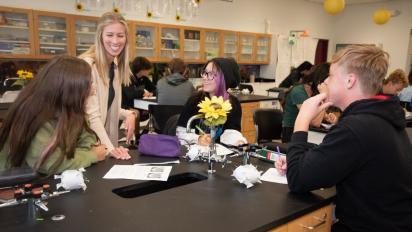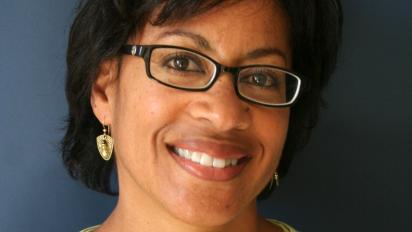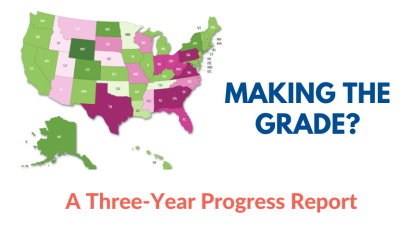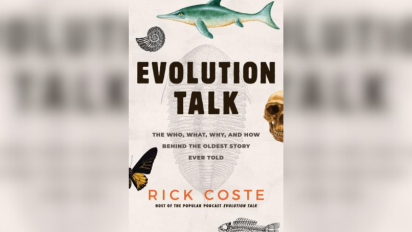Random Samples with Lisa White
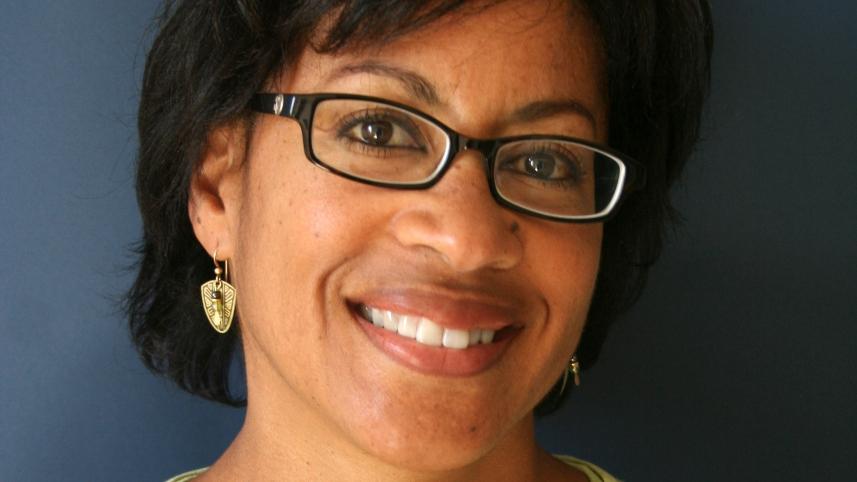
Lisa White is Director of Education and Outreach at the University of California Museum of Paleontology (UCMP), where she helmed the development of the Understanding Evolution website (with support from NCSE) and the Understanding Science website. In 2022 she received the Society for the Study of Evolution’s Stephen Jay Gould Award as well as NCSE’s Friend of Darwin award. The interview has been edited for length and clarity.
Glenn Branch: You came to UCMP after a long stint as Professor of Geosciences at San Francisco State University. What was the appeal of the transition from formal to informal education?
Lisa White: The appeal was the opportunity to share science more broadly using all the great tools and resources (online and in- person) the UCMP provides. I loved being a faculty member at San Francisco State University. In addition to teaching, research, and administrative duties, for years I created hands-on programs for pre-college students and teachers to learn about Earth science outside of the classroom in meaningful ways. Towards this effort I used UCMP web resources to expand the paleontological and geological content in these programs. As a faculty member I sat on the advisory boards for Understanding Evolution and Understanding Science and was continually inspired to break down complex science topics into simpler language and be a more effective messenger of science to a diversity of communities. What better platform could there be for a paleontologist who throughout her career has enjoyed explaining Earth science phenomena to general audiences than a university-based paleontology museum like UCMP?
I have been surprised at how the process and experience of developing resources for informal educational use has made me a better scientist. The degree of specialization required when I was more active in research left little time and energy to consider how my paleontological work could have broader appeal and impact. As the education and outreach director at UCMP, I now am constantly thinking about and designing materials and programs that are multidisciplinary in nature, drawing from the Earth and life sciences, and using educational research data to inform the learning design.
GB: UCMP and NCSE have a long history of collaboration, including on the Understanding Evolution website. Can you comment on the significance of that collaboration?
LW: The collaboration with NCSE has been tremendously important in shaping and further refining Understanding Evolution resources with clear and unambiguous language about the science of biological evolution. NCSE has its finger on the pulse of groups and audiences that, unfortunately, promote belief systems opposed to evolution and commonly push back on the evidence for evolution. NCSE’s knowledge of these audiences, and its skills in prioritizing strategic and intentional communication to counter misunderstandings about evolutionary science, has made the NCSE-UCMP partnership essential to countering attacks aimed at pushing evolution out of science classrooms.
GB: Not all readers may be as familiar with the companion website Understanding Science. Can you describe what it offers?
LW: Understanding Science offers a view of science that represents a more accurate picture of how science really works. Instead of presenting science as the result of an outdated linear model of “the scientific method,” the website presents science as a modern and coherent set of commonly accepted practices that drive research into a given field of inquiry, thus reflecting the true nature and process of science. These accepted practices include gathering evidence about the natural world, testing ideas, and sharing outcomes with other scientists and with the public. The website also explains the importance of data collection and analysis, discussing findings in an open community, publishing results, peer-review, and ultimately the acceptance of new scientific explanations when the prevailing ones fail to explain observations. This updated picture of science provides explanations and resources appropriate for the general public, and moreover shares an array of teaching and learning resources supporting science teachers and students at grade levels from kindergarten through college.
GB: What kind of feedback have you received from teachers and students about the site?
LW: Students most often comment on the clear and straightforward nature of the information presented on the site and how relieved they are to be able to explore features and examples of science at their own pace. Teachers value many sections of the website and most often comment on the How Science Works flowchart and supporting graphics. They frequently acknowledge how useful it is in changing thinking about the “scientific method” and correcting common misconceptions in science. The flowchart appears in high school and college science textbooks, is part of adopted K–12 curriculum in several districts, and even made its way on to a science fair T-shirt and award ribbon!
GB: As you know, our focus at NCSE is on socially controversial topics in science. To what extent do formal educators and informal educators cooperate on the task of supporting the teaching of these topics?
LW: Formal and informal educators share the goal of creating vetted, easily accessible resources that demystify complex and controversial topics in science. But they often aren’t able to share their approaches across the formal/informal divide. Because I have been a member of both communities, I see the barriers as not insurmountable, particularly in today’s culture, with its emphasis on broader impacts and means for communicating and sharing science through multiple channels — from social media to science educational journals dedicated to how people best teach and learn. I like to think that at UCMP I’m doing my part in overcoming these barriers!


